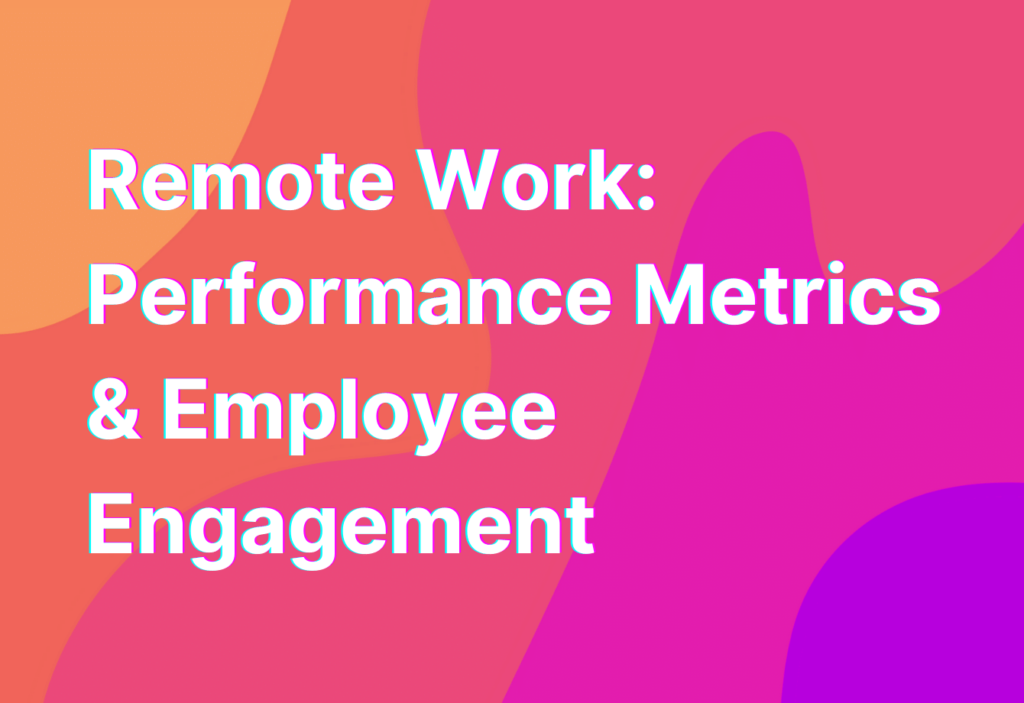Remote Work: Performance Metrics & Employee Engagement
Hey there, remote work enthusiasts! It’s Ashley here, your go-to gal for all things remote work. Today, I want to dive into the fascinating world of performance metrics and employee engagement in remote work. As someone who has been working remotely for over 10 years in the tech industry, I’ve seen firsthand how important it is to measure performance and keep employees engaged, even when they’re miles away from the office. So, grab your favorite cup of coffee and let’s get started!
The Importance of Performance Metrics
When it comes to remote work, performance metrics play a crucial role in evaluating the productivity and effectiveness of employees. Without the ability to physically see your team members in action, it can be challenging to gauge their performance solely based on their output. That’s where performance metrics come in handy.
Performance metrics provide valuable insights into how well employees are performing, allowing managers to identify areas for improvement and provide targeted feedback. By tracking these metrics, companies can ensure that their remote teams are meeting their goals and delivering high-quality work.
Now, you might be wondering, “What are some common performance metrics used in remote work?” Well, I’m glad you asked! Let’s take a look at a few key metrics that can help you measure the success of your remote team:
- Productivity: This metric measures the amount of work completed by an employee within a given time frame. It can be calculated by dividing the total output by the total hours worked.
- Quality: Quality metrics assess the accuracy, thoroughness, and overall excellence of an employee’s work. This can be measured through customer satisfaction surveys, peer reviews, or objective criteria.
- Timeliness: Timeliness metrics evaluate how well employees meet deadlines and deliver work on time. This can be measured by tracking the number of missed deadlines or the average time it takes to complete a task.
- Communication: Communication metrics assess how effectively employees communicate with their team members and clients. This can be measured through feedback surveys, response times, or the number of meetings attended.
- Collaboration: Collaboration metrics measure how well employees work together as a team. This can be evaluated through the number of successful team projects, the level of participation in group discussions, or the use of collaboration tools like Trello or Slack.
By tracking these performance metrics, companies can gain valuable insights into the strengths and weaknesses of their remote teams. This data can then be used to identify areas for improvement, provide targeted training, and ultimately boost overall productivity and employee engagement.
Boosting Employee Engagement in Remote Work
Now that we’ve covered the importance of performance metrics, let’s shift our focus to employee engagement. Employee engagement refers to the level of commitment, passion, and enthusiasm employees have towards their work and the organization they work for. In a remote work setting, maintaining high levels of employee engagement can be a bit more challenging, but definitely not impossible!
Here are a few strategies to help you boost employee engagement in your remote team:
- Regular Check-Ins: Schedule regular one-on-one check-ins with your remote team members to discuss their progress, address any concerns, and provide feedback. These check-ins not only help you stay connected with your team but also show that you value their work and well-being.
- Virtual Team Building Activities: Foster a sense of camaraderie and teamwork by organizing virtual team building activities. From online trivia nights to virtual escape rooms, there are plenty of fun and engaging activities that can bring your remote team closer together.
- Recognition and Rewards: Don’t forget to recognize and reward your remote employees for their hard work and achievements. Whether it’s a simple shout-out during a team meeting or a gift card to their favorite online store, small gestures of appreciation can go a long way in boosting employee morale and engagement.
- Clear Communication: Effective communication is key to keeping remote employees engaged. Make sure to provide clear instructions, set expectations, and keep everyone in the loop about important updates or changes. Utilize collaboration tools like Trello or Slack to streamline communication and ensure everyone is on the same page.
- Professional Development Opportunities: Invest in your remote team’s professional development by offering training programs, webinars, or online courses. Not only does this show that you care about their growth, but it also helps them acquire new skills and stay motivated in their roles.
By implementing these strategies, you can create a positive and engaging remote work environment that fosters productivity, collaboration, and employee satisfaction.
Wrapping Up
And there you have it, folks! We’ve explored the world of performance metrics and employee engagement in remote work. Remember, measuring performance through metrics is essential for evaluating productivity and identifying areas for improvement. Additionally, boosting employee engagement is crucial for maintaining a motivated and satisfied remote team.
If you want to learn more about the challenges of remote work and how to overcome them to boost employee engagement, check out our article on Remote work challenges. It’s filled with valuable insights and practical tips to help you create a thriving remote work culture.
Until next time, happy remote working!


